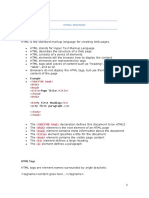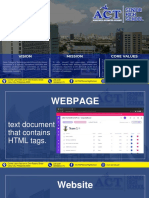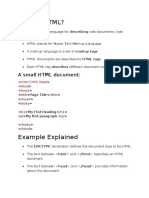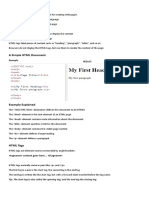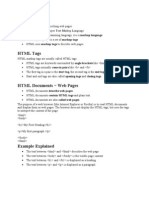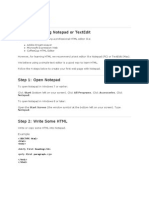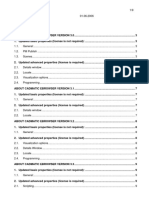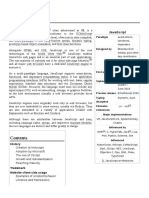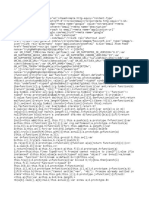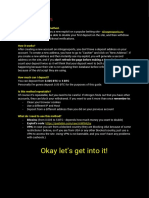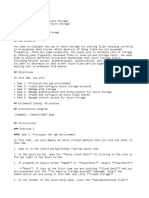0% found this document useful (0 votes)
18 views4 pagesWhat Is HTML
HTML, or Hyper Text Markup Language, is the standard markup language for creating web pages, consisting of elements that define the structure and display of content. Key components include the <html>, <head>, and <body> elements, along with various tags for headings, paragraphs, links, and images. HTML elements can have attributes that provide additional information, and styles can be applied using the style attribute.
Uploaded by
kulasCopyright
© © All Rights Reserved
We take content rights seriously. If you suspect this is your content, claim it here.
Available Formats
Download as DOCX, PDF, TXT or read online on Scribd
0% found this document useful (0 votes)
18 views4 pagesWhat Is HTML
HTML, or Hyper Text Markup Language, is the standard markup language for creating web pages, consisting of elements that define the structure and display of content. Key components include the <html>, <head>, and <body> elements, along with various tags for headings, paragraphs, links, and images. HTML elements can have attributes that provide additional information, and styles can be applied using the style attribute.
Uploaded by
kulasCopyright
© © All Rights Reserved
We take content rights seriously. If you suspect this is your content, claim it here.
Available Formats
Download as DOCX, PDF, TXT or read online on Scribd
/ 4




















